Lebanon isn’t just a country; it’s a storybook of civilisations, cultures, and creativity — and its museums are the chapters that bring it to life. Whether it’s walking among Phoenician artefacts, stepping into a medieval castle, or marvelling at contemporary art, the museums in Lebanon offer more than exhibits — they offer experiences.
When I visited Lebanon, I was struck by how its museums seemed to weave together the threads of its complex history. From ancient relics that tell tales of its role as a crossroads of empires to contemporary galleries reflecting its resilience and modern identity, each museum felt like stepping into a new chapter of Lebanon’s story.
In this guide, I’ll take you through some of the very best — places that left me inspired and wanting to uncover even more. Whether you’re an art lover, a history enthusiast, or simply curious about this extraordinary country, these museums will open your eyes to the essence of Lebanon.
Exploring Lebanon’s Rich Heritage through Its Museums
Walking into a museum in Lebanon feels like opening a door to a thousand lives lived before you. These spaces aren’t just filled with dusty artefacts or silent exhibits — they hum with the energy of the people and stories that shaped this land.
Whether it’s a golden sarcophagus reflecting the ambitions of ancient Phoenicians or a bold painting speaking to Lebanon’s modern identity, these museums invite you to dive headfirst into the layers of history, art, and culture that make Lebanon so unique.
Why Museums in Lebanon are a Must-See for Travellers
I found that visiting a museum in Lebanon isn’t your typical cultural outing — it’s an experience that stays with you.
Each one offers a lens into a world you might not expect: a soap museum that reveals the craft of everyday life, a former war-torn building turned cultural hub, or a grand gallery echoing with modern artistic voices. These are spaces where Lebanon’s resilience, creativity, and heritage collide, leaving you with a deeper understanding of a country that’s impossible to sum up in words.
Lebanon’s Role as a Crossroads of Civilisations
Few countries wear their history as visibly as Lebanon.
Positioned at the meeting point of East and West, this small nation has played host to empires and cultures, each leaving its mark on the land. Phoenicians traded across seas, Romans built temples that defy time, and Ottomans brought intricate artistry and architecture.
Step into a museum here, and you’re not just looking at artefacts — you’re witnessing the threads that wove together some of the world’s most influential civilisations, all converging in one extraordinary place.
Top Museums in Lebanon to Visit
When I first started exploring Lebanon’s museums, I expected history and art — but what I found was so much more. Each museum felt like stepping into a conversation, one that stretched across centuries and cultures. From iconic institutions that showcase the country’s ancient treasures to smaller, unexpected gems, Lebanon’s museums offer an unparalleled window into its soul.
Here are some that left the deepest impression on me and might do the same for you.
1. National Museum of Beirut (Ras Beirut, Beirut)
The National Museum of Beirut is a vivid chronicle of Lebanon’s survival, resilience, and rich cultural tapestry.
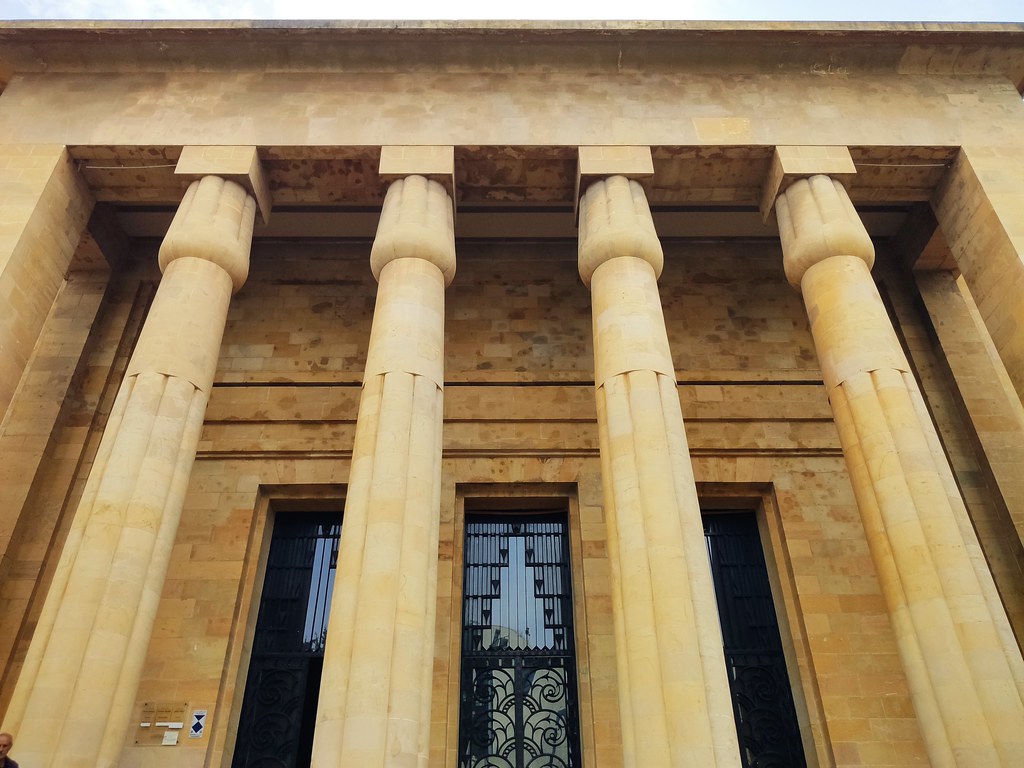
Walking through its marble halls, I found myself standing in awe of artefacts that had survived not only millennia but also the devastating civil war. Restored to its full glory, this museum is the crown jewel of Lebanon’s cultural heritage and a must-visit for anyone curious about the country’s ancient roots.
A Glimpse into Lebanon’s Ancient Civilisations
From the moment I stepped inside, I was struck by the sheer depth of history encapsulated within the walls of this museum. The collection spans thousands of years, with some pieces originating from the earliest civilisations that called this land home.
The Phoenician sarcophagi, with their hauntingly realistic human faces, stood as solemn reminders of the ancient people who once thrived here. And then there were the delicate pieces of Roman jewellery, shimmering as though time had stood still.
It was impossible not to feel a profound connection to the legacies of those who shaped this land.
Key Collections and Exhibits
There are certain pieces in the museum that stayed with me long after I left. One of the most unforgettable was the Phoenician gilded bronze figurines, frequently photographed and found buried near the Obelisk Temple at Byblos. These small but significant relics tell the story of a once-great civilisation, its artistry echoing through the ages.
The marble sarcophagus of Ahiram is another piece that commands attention — with its detailed carvings that seem to breathe life into ancient history. I also found myself mesmerised by the Roman-era mosaics, with their intricate designs that transport you back to the era of opulence and artistry.
The museum’s collection of Bronze Age pottery felt particularly poignant — simple yet incredibly evocative of daily life from a time long past. And in the atmospheric basement, I discovered the human-faced sarcophagi from Saida and the stunning replica of a 2nd-century AD collective tomb from Tyre, which is adorned with murals that tell mythical stories.
The Chalcolithic pot burials from the Qadisha Valley, holding land deeds as they perished during the Crusader Wars, were especially moving. They reminded me of the continued refugee stories in Lebanon today, offering a quiet yet powerful connection to Lebanon’s long history of displacement.
Practical Information
- Location: Damascus Boulevard, Ras Beirut, Beirut
- Opening Times: Tuesday to Sunday, 10 AM – 2 PM
- Entrance Fee: LBP 15,000 for non-Lebanese nationals, LBP 5,000 for Lebanese
- Getting There: Easily accessible by taxi, ride-share or 'service'. Alternatively, if you are staying in Beirut, you may be able to get here on foot.
- Tip: Don’t miss the guided tours available in English and Arabic!
2. Nicolas Sursock Museum (Achrafieh, Beirut)
The Nicolas Sursock Museum is where Beirut’s storied past meets its creative present.
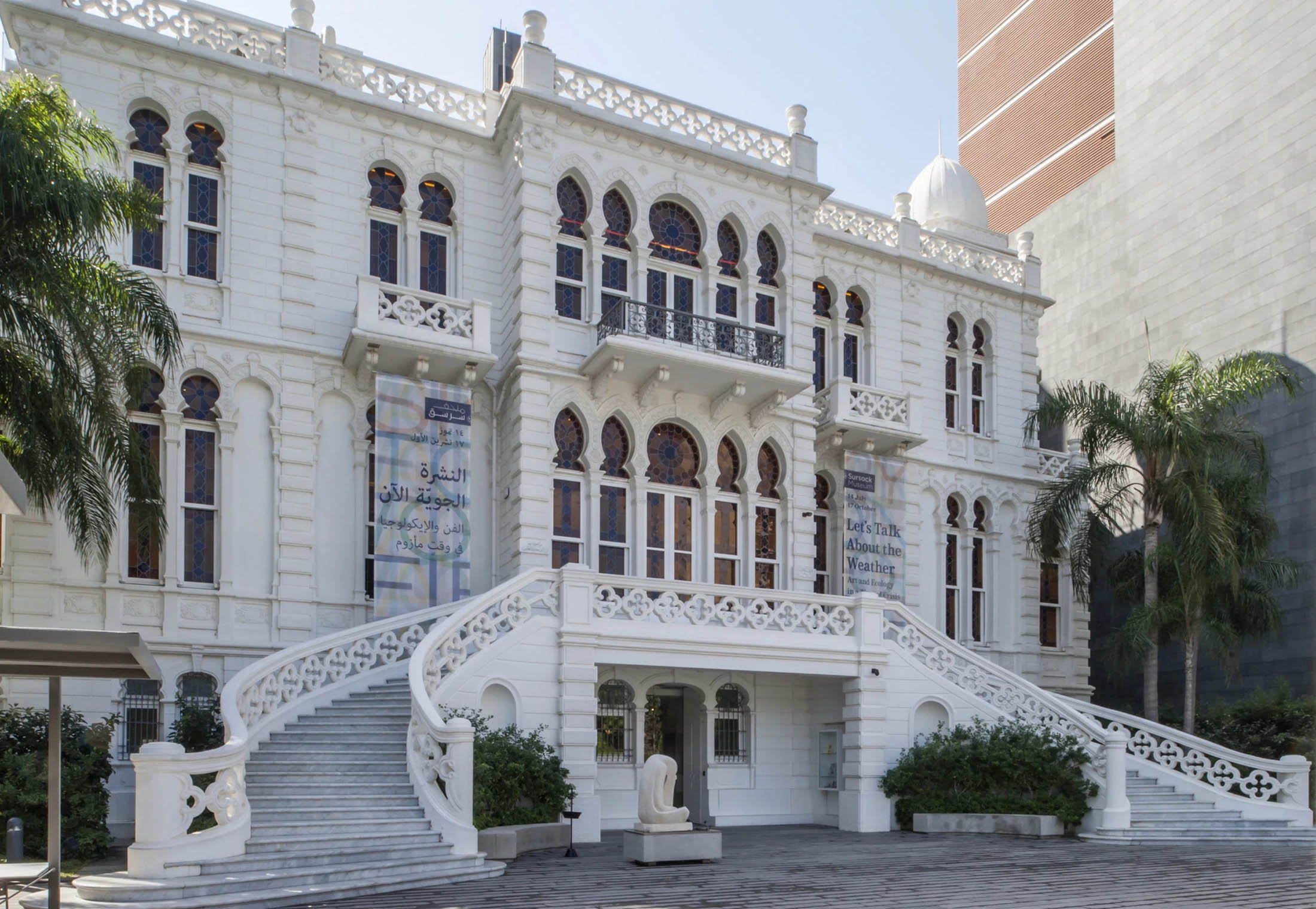
Tucked away in the Achrafieh district, this stunning former villa is a masterpiece of Venetian and Ottoman architecture. Walking through its white façade, with its intricate stained-glass windows and ornate balconies, is like stepping into a time capsule — one where history and art intertwine seamlessly.
Bequeathed to the city by Nicolas Ibrahim Sursock, a Lebanese aristocrat and art lover, the museum has become a hub for modern and contemporary art since its transformation in the 1960s.
Modern Art and Historic Architecture in Beirut
The first thing that catches your attention is the museum's striking blend of historic charm and modern purpose. The mansion, built in 1912, is a visual celebration of Lebanon’s cultural fusion, with its delicate interplay of Italianate elegance and Ottoman design.
Inside, the space has been reimagined to house a vibrant collection of modern and contemporary art. Even if you’re not an art buff, the architecture alone is worth the visit — it feels like being in the beating heart of Beirut’s artistic soul.
Exhibitions from Lebanese and International Artists
The museum’s exhibitions are as dynamic as the city itself. The annual Salon d’Automne, a tradition since 1961, draws a mix of emerging and renowned Lebanese artists, an event that breathes fresh life into Beirut’s art scene year after year. The rotating exhibits are equally impressive, showcasing both local and international works that often feel like a conversation between past and present.
Whether you’re there for the history, the art, or just to soak in the atmosphere, the Nicolas Sursock Museum is an unforgettable stop for anyone wanting to see Lebanon through its most creative lens.
Practical Information
- Location: Greek Orthodox Archbishopric Street, 20715509, Achrafieh, Beirut, Lebanon
- Opening Times: Wednesday to Sunday, 10 AM – 6 PM
- Entrance Fee: Free of charge
- Getting There: Accessible by taxi, ride-share (such as Uber) or 'service'. Go on foot if you're staying nearby (such as at The Grand Meshmosh Hotel).
- Tip: If you're an aspiring artist or simply enjoy sketching, bring your pencil along when visiting the galleries and special exhibitions. Just a heads-up: easels and stools aren't allowed, and on busier days, sketching might be restricted. But don’t let that stop you — it's a great way to connect with the art up close!
3. Kahlil Gibran Museum (Bscharre, North Lebanon)
The Kahlil Gibran Museum in Bscharre is a glimpse into the world of one of Lebanon’s most celebrated thinkers.
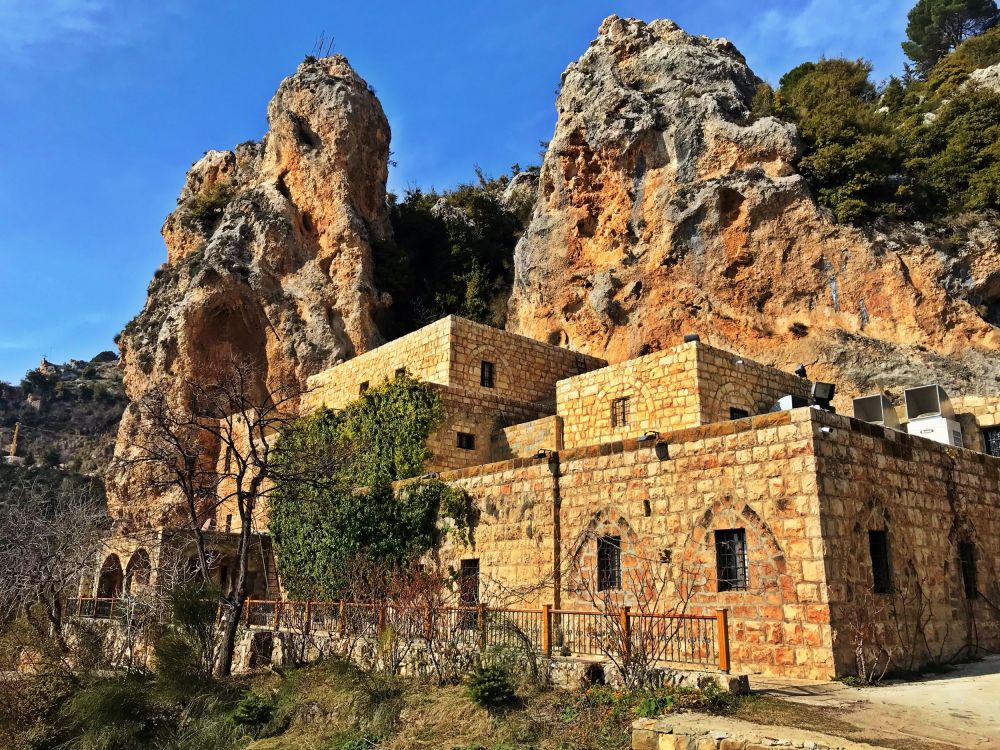
Located in a modest 17th-century monastery that Gibran himself chose as his final resting place, it feels more like walking through the chapters of his life than visiting an exhibit.
Insights into the Life and Works of the Famous Poet
The museum brings Gibran’s creative spirit to life through his personal belongings, handwritten manuscripts, and over 400 of his paintings and drawings. Seeing his original works and journals, I couldn’t help but feel closer to the mind behind The Prophet.
Each piece reveals something of the man who straddled the worlds of art, literature, and philosophy.
Located in the Poet’s Birthplace
Set in Bscharre, Gibran’s hometown, the museum feels grounded in the same rugged landscape that inspired much of his writing. The surrounding Qadisha Valley isn’t just a backdrop — it’s a part of the story.
Visiting the museum here offers a chance to connect not only with Gibran’s legacy but also with the land that shaped his ideas.
Practical Information
- Location: Bscharre, North Lebanon
- Opening Times: Tuesday to Sunday, 9 AM – 5 PM
- Entrance Fee: LBP 8,000
- Getting There: Accessible by private car from Tripoli or Beirut (approximately 1.5 hours). Bus services are available from Beirut to Bscharre.
- Tip: Don’t miss walking through the surrounding Qadisha Valley — it’s not only a UNESCO World Heritage site, but it was also Gibran’s inspiration.
4. American University of Beirut (Archaeological) Museum (AUB Campus, Beirut)
The Archaeological Museum at the American University of Beirut (AUB) is a portal to the heart of Lebanon’s history and its connections to the ancient world.

Tucked away on AUB’s stunning campus, the museum quietly holds treasures that span millennia, offering a tangible link to the civilisations that shaped this land.
Rich Collections from Lebanon’s Cultural Past
Walking through the museum, I found myself marvelling at the range of its collection. From prehistoric flint tools that hint at humanity’s earliest steps to Phoenician sculptures embodying the artistry of a seafaring empire, every artefact feels like a whisper from the past.
What struck me most was how seamlessly these pieces tell the stories of not just Lebanon, but its role in a larger, interconnected ancient world.
Ancient Artefacts and Exhibits
The highlights are as diverse as they are fascinating. The Cesnola Collection of Cypriot pottery tells tales of trade and cultural exchange, while the findings from Ksar Akil — a prehistoric site — connect you to some of the earliest human settlements. Each piece invites you to imagine the lives of those who once held these objects, built these tools, or shaped these sculptures.
The museum’s intimate setting makes it feel less like a traditional institution and more like a quiet dialogue with history, tucked away in the vibrant heart of Beirut. If you’re even slightly curious about the layers of culture that define Lebanon, this place is a must-visit.
Practical Information
- Location: AUB Campus, Beirut, Lebanon
- Opening Times: Monday to Friday, 9 AM – 5 PM (winter) or 8 AM to 3 PM (summer)
- Entrance Fee: Free of charge
- Getting There: Located within the American University of Beirut campus, accessible by taxi, ride-share (Uber) or 'service'. AUB is a central landmark in Beirut, making it easy to find, even on foot.
- Tip: Take a stroll through the beautiful AUB campus after your visit — its gardens and views of the Mediterranean are the perfect way to end your museum experience.
5. The Silk Museum (Aley, Mount Lebanon)
Tucked into the village of Aley, a short drive from Beirut, The Silk Museum is where Lebanon’s past comes to life — thread by thread.
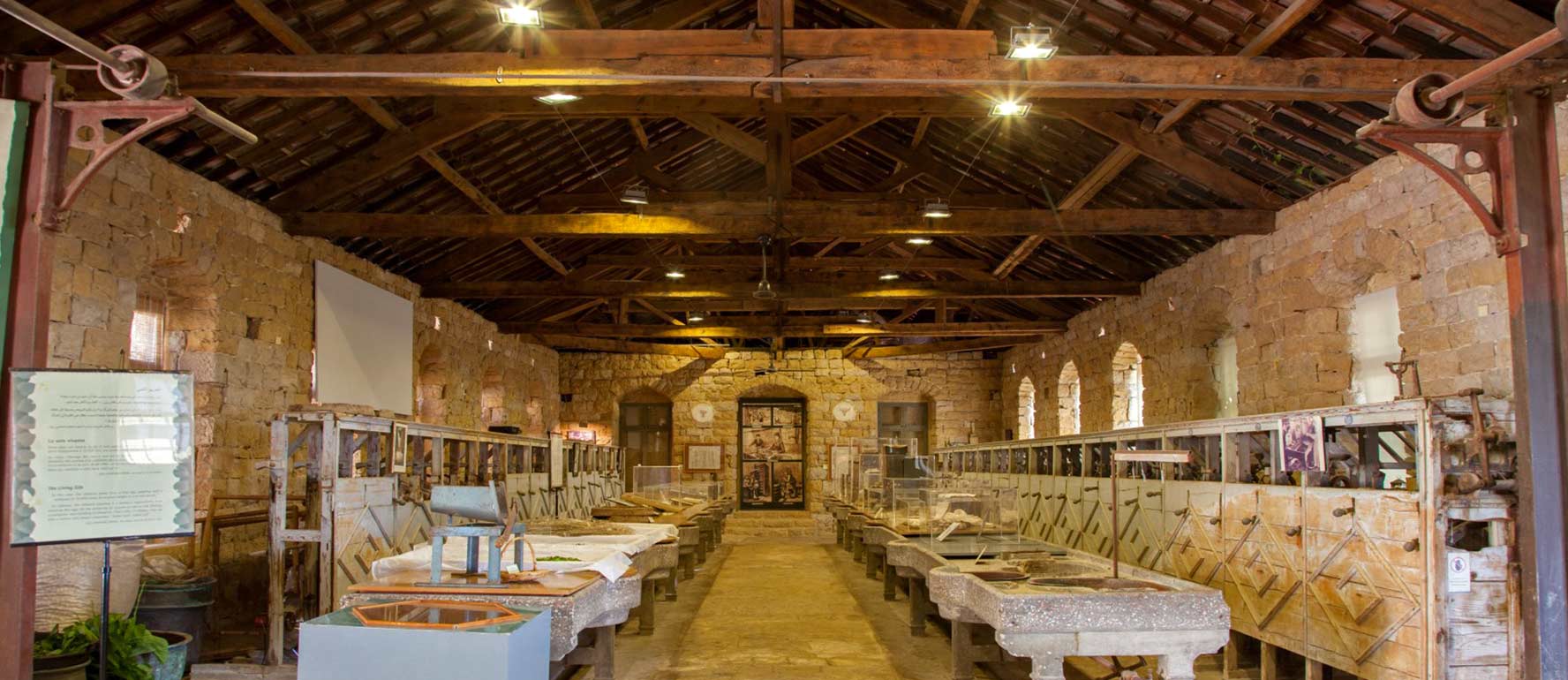
Housed in a beautifully restored silk factory that once buzzed with activity in the early 20th century, the museum is about the stories, the people, and the economy that this delicate fabric wove together.
Discover Lebanon’s Traditional Silk Industry
Walking into The Silk Museum may feel like you've stepped back to a time when silk was the lifeblood of Mount Lebanon.
The exhibits guide you through the incredible process of turning silkworm cocoons into shimmering fabric. Live silkworms munching away on mulberry leaves offer a glimpse into the beginnings of this craft, while historic looms and displays of traditional garments — like 19th-century dresses and intricate silk trousers — bring the story full circle.
Exhibits on Lebanon’s Economic Past
What's most striking is perhaps how silk was more than just a material — it was an economic powerhouse. At its height in the 19th century, silk made up half of Mount Lebanon’s GDP, transforming lives and communities. The museum highlights this with stories of the women who worked in the industry, gaining independence and income long before it was common.
Surrounded by olive groves and stone terraces, it’s easy to imagine how this small factory once played a vital role in Lebanon’s history.
Whether you’re there for the history, the craft, or simply to appreciate the beautiful setting, The Silk Museum is a reminder of how something as delicate as silk can leave a lasting legacy.
Practical Information
- Location: Aley (below Bsous), Mount Lebanon, Lebanon
- Opening Times: Opening times may vary (but are typically Tuesday to Sunday, 10 AM to 6 PM), so it's a good idea to contact the Silk Museum in advance for the most up-to-date information and to make a reservation, especially if you're planning a group visit or workshop. You can reach them via phone at +961 5 940 767 or email at info@thesilkmuseum.com
- Entrance Fee: LBP 300,000 Lebanese and LBP 500,000 for non-Lebanese nationals
- Getting There: Accessible by private car from Beirut (approximately 30 minutes). The museum is located just below the village of Bsous, off the main road from the capital.
- Tip: Visit the outdoor garden where you can see the silkworms in action — it’s a fascinating experience, especially if you're interested in traditional craftsmanship.
Save this guide for future reference!
Thematic and Specialised Museums in Lebanon
Lebanon’s museums aren’t limited to history and art — some celebrate the everyday crafts and trades that have shaped the country’s identity.
These thematic and specialised museums offer a fresh perspective, shedding light on Lebanon’s cultural and economic past in ways that are both fascinating and unexpectedly personal.
1. Soap Museum (Saida/Sidon, South Lebanon)
Tucked away in the old city of Sidon, the Soap Museum turns an ordinary household item into a cultural artefact.
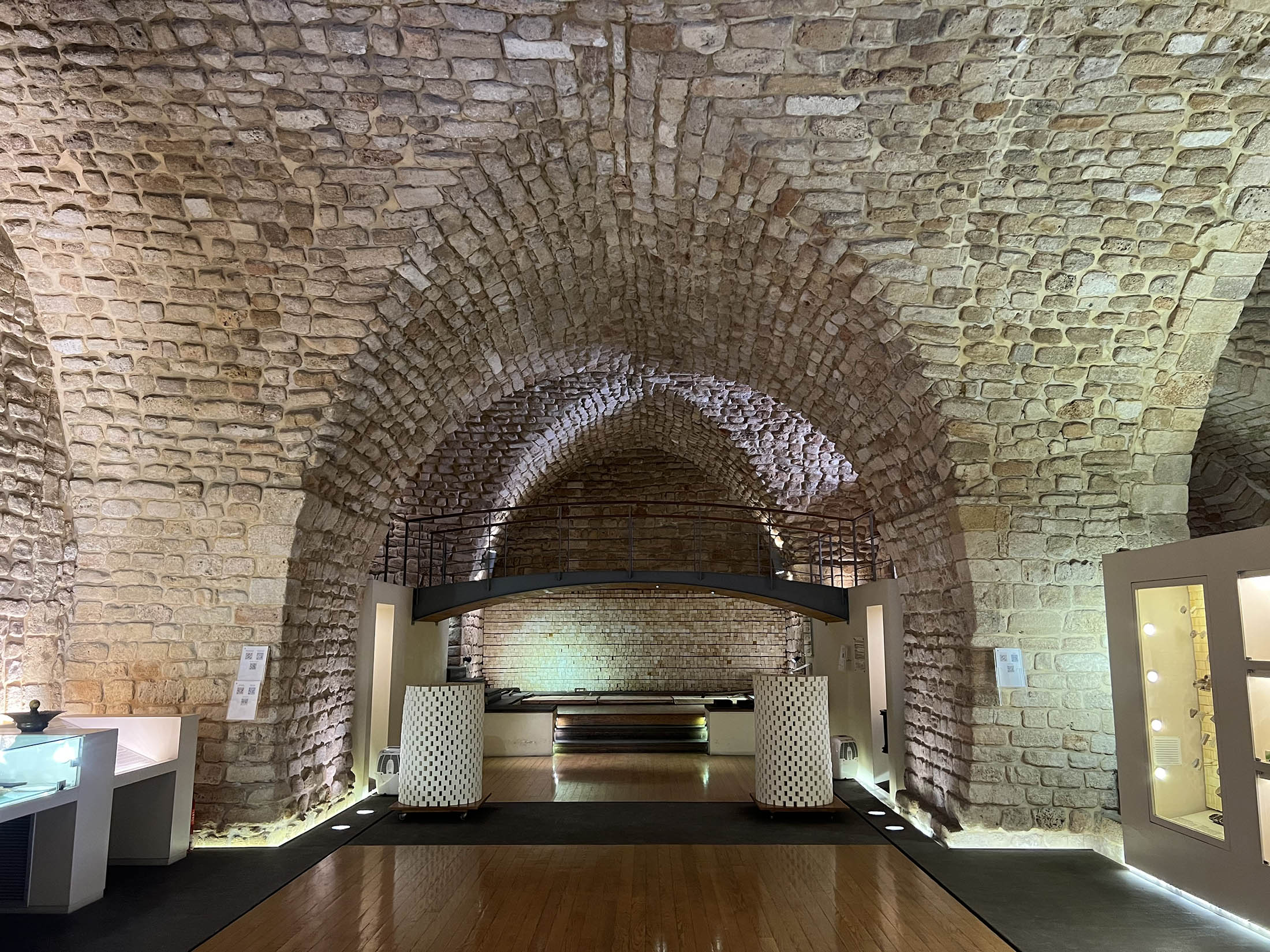
Housed in a 17th-century soap factory, this museum reveals the intricate process of crafting Lebanon’s iconic olive oil soap while immersing you in the rich history of soap-making.
Explore Lebanon’s Soap-Making Tradition
As I wandered through the museum’s stone-walled halls, the process of soap-making unfolded before me.
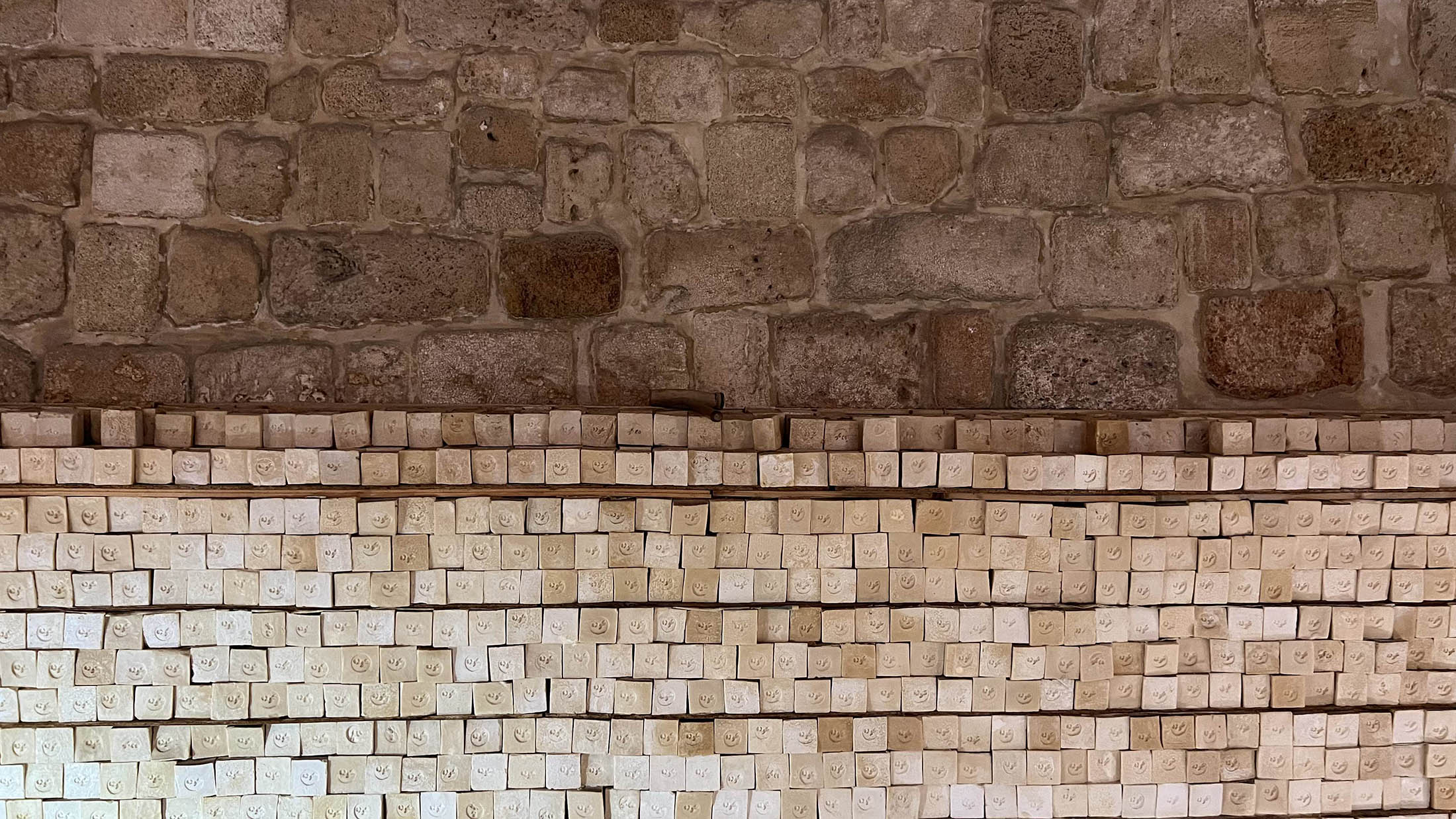
Exhibits showcase everything from the selection of pure olive and laurel oils to the careful drying and moulding techniques passed down through generations. The tools and methods on display make it clear that this isn’t just a craft — it’s a centuries-old art form rooted in tradition.
The Famous Olive Oil Soap
Lebanon’s olive oil soap is a piece of the country’s heritage. Known for its purity and simplicity, this soap has been used in hammams and households for centuries.
The museum celebrates its cultural significance and offered me the chance to purchase handcrafted soaps made with the same care and expertise. Leaving with a bar or two felt like taking home a piece of Lebanon itself.
Practical Information
- Location: Al Moutran Street, Haret Audi, Old Town Saida, Sidon, Lebanon
- Opening Times: Monday to Sunday, 8.30 AM – 6 PM
- Entrance Fee: US$1.50 for adults, US$1 for 12-18 year old visitors, free for those under 12
- Getting There: Located in the heart of Saida’s historic district, it's easily accessible by private car from Beirut or by bus/shared taxi.
- Tip: Be sure to try the handmade soaps available for purchase — they’re made using the traditional methods showcased in the museum and make for perfect souvenirs.
2. Lebanese Military Museum (Yarzeh, near Beirut)
What can a pair of boots, a decommissioned tank, or a soldier’s uniform tell you about Lebanon?

A visit to the Lebanese Military Museum in Yarzeh reveals the answers. Nestled within the Ministry of National Defense, this museum takes you beyond the headlines and into the personal and national stories of Lebanon’s military past.
Lebanon’s Military History from the Ottoman Empire to Modern Day
Walking through the museum feels like flipping through the pages of a history book written in uniforms, weapons, and the belongings of soldiers who lived through pivotal eras. From the Ottoman Empire’s control to the French Mandate and the creation of the Lebanese Armed Forces, the exhibits don’t just show you what happened — they immerse you in the experiences of those who were there.
One of the most unforgettable sights is the "Hope for Peace" monument, a towering sculpture crafted from retired tanks and artillery. Standing in its shadow, you’re reminded that every piece of military hardware here once played a role in Lebanon’s turbulent journey. But now, it stands as a promise — a commitment to peace and a future free from conflict.
The Lebanese Military Museum is about survival, resilience, and the enduring hope for a better tomorrow. It’s a place that challenges you to see Lebanon’s past not just in terms of battles fought, but lessons learned.
Practical Information
- Location: Ministry of National Defense, Yarzeh, Beirut, Lebanon
- Opening Times: Monday to Friday, 7.30 AM – 2.30 PM
- Entrance Fee: Free of charge
- Getting There: Accessible by private car, ride-share (Uber), or bus/'service'. It’s located near the Lebanese Ministry of Defense, a notable landmark in Yarzeh.
- Tip: Don’t miss the "Hope for Peace" monument outside the museum, which is a powerful symbol made from decommissioned military hardware — it's a reminder of Lebanon’s resilience and future hopes.
3. Beit Beirut – Museum and Urban Cultural Centre (Achrafieh, Beirut)
Beit Beirut is a scar on the city, preserved for everyone to see.
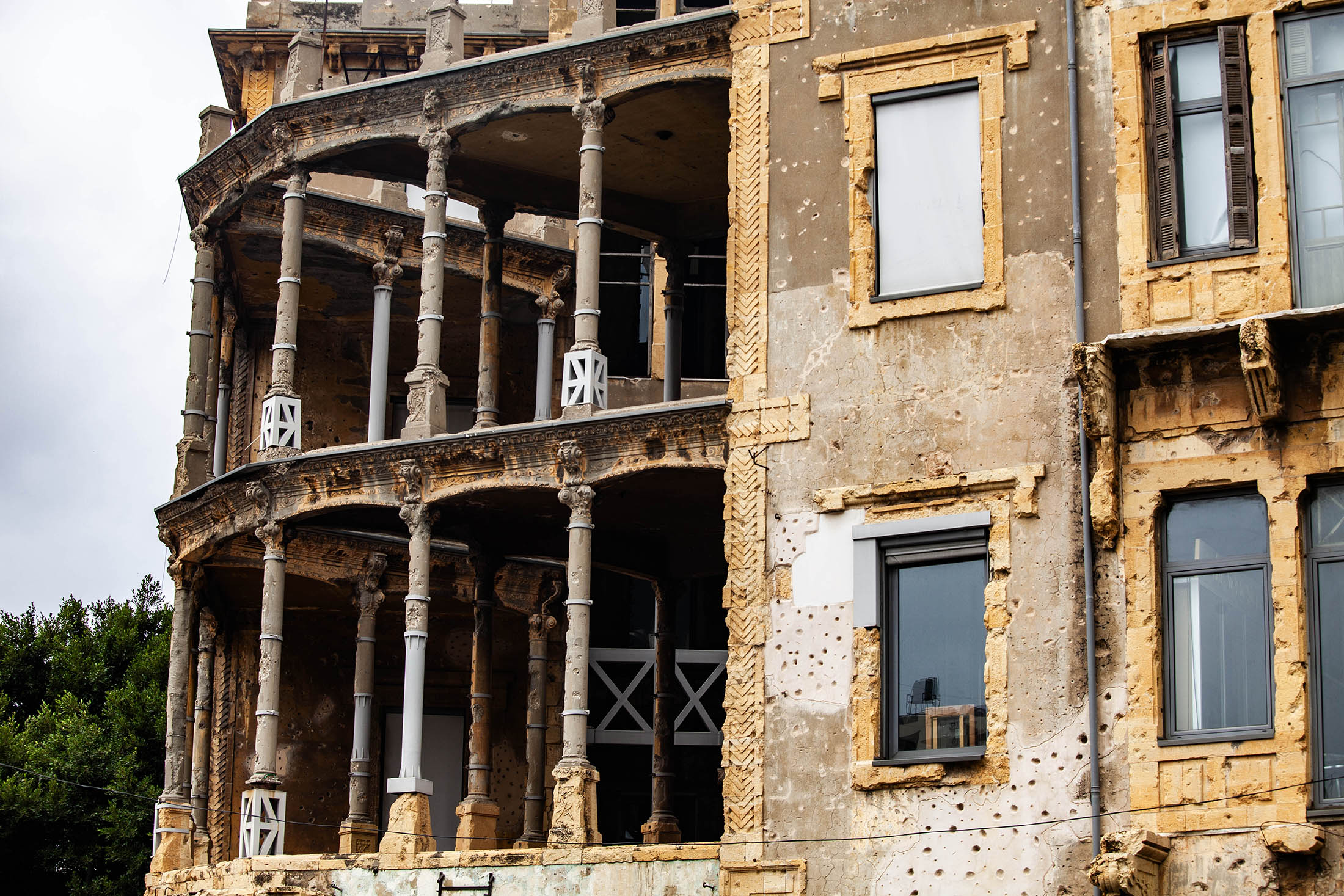
Standing at the intersection of Damascus and Independence Streets, the building feels alive, as if it’s holding its breath, waiting to tell its story.
Once a sniper’s nest during the Lebanese Civil War, this battered yellow structure (colloquially dubbed 'The Yellow House) has been transformed into a space that confronts you with Beirut’s fractured past while inviting you to imagine its future.
Reflecting on the Lebanese Civil War
Walking through Beit Beirut, I couldn’t shake the feeling of ghosts lingering in the walls. Bullet holes pockmark the facade, while the skeleton of the building exposes the violence it witnessed. Inside, the exhibits are hauntingly intimate — personal photographs, handwritten letters, and pieces of rubble tell stories of lives interrupted, of a city torn apart.
It’s not just history you see; it’s the weight of memory hanging in the air.
The Impact on Beirut’s Urban Landscape
But Beit Beirut doesn’t just look back; it looks around. The building itself, with its elegant 1920s architecture juxtaposed against the raw wounds of war, mirrors the city’s uneasy balance between preservation and progress. Exhibits explore how the civil war reshaped Beirut’s streets, neighbourhoods, and identity, forcing the city to adapt and rebuild in ways that continue to ripple through its urban landscape today.
Standing in Beit Beirut, I felt the past. And in doing so, I came away with a deeper understanding of how Beirut’s scars have shaped its beauty, resilience, and determination to move forward.
Practical Information
- Location: Damascus Road, Achrafieh, Beirut, Lebanon
- Opening Times: Wednesday to Sunday, 12 PM – 8 PM
- Entrance Fee: Free of charge
- Getting There: Located in the heart of Beirut, easily accessible by taxi, ride-share, 'service' or even on foot. The museum is a short walk from the Beirut Souks and other key landmarks.
- Tip: Take time to explore the building’s exterior — this former sniper’s nest from the Civil War is an evocative piece of history in itself, with bullet holes and shattered windows still visible.
4. Mleeta Landmark (Mleeta, Southern Lebanon)
Imagine standing in a place where the earth itself feels heavy with memory. That’s Mleeta — a mountainside once alive with resistance and the rustle of camouflage.
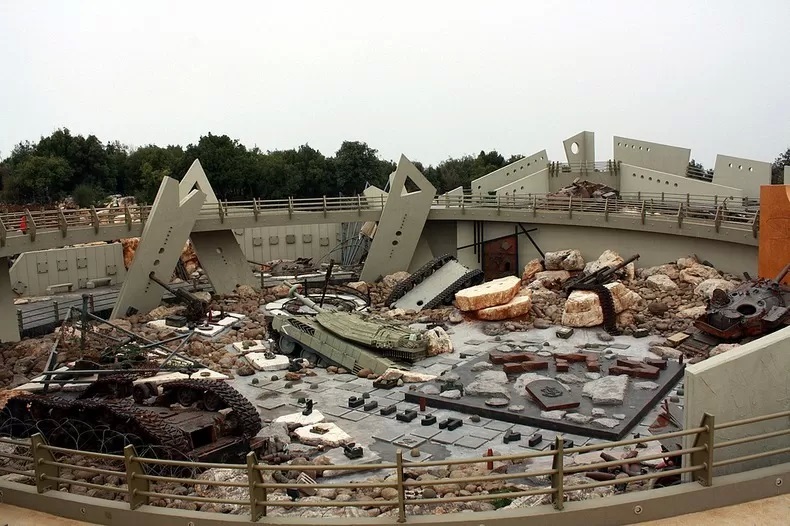
Now transformed into a surreal museum, it surrounds you with history.
Interactive Museum on Lebanese Resistance
As you step into the heart of Mleeta, you’re led through a maze of underground tunnels that once hid fighters from enemy eyes.
The air feels cooler here, the walls damp with a sense of urgency. A sniper’s perch looks out over the valley below, and for a moment, you can picture the watchful eyes that once scanned the horizon for movement. Then, there’s "The Abyss" — a haunting pit where rusting Israeli military relics lie piled, each piece a trophy and a reminder of battles fought and won.
A Site of Historical Significance
But Mleeta is more than just a museum; it’s a battleground frozen in time. The jagged landscape, the trenches, and the remnants of bunkers tell a story that words can’t. Walking these paths, you feel the weight of what it took to defend this land, the sacrifices made, and the defiance etched into every rock and tree.
Mleeta is raw and unforgettable. At Mleeta, you step into the shadow of history and come away changed.
Practical Information
- Location: Mleeta Landmark, Mazraat Qalaat Meis, (Southern) Lebanon
- Opening Times: Monday to Sunday, 9 AM – sunset
- Entrance Fee: LBP 2,000 (LBP 1,000 for children under 10)
- Getting There: BUS To reach Mleeta from Beirut, head to the Jna'h area near the Kuwaiti embassy, where you'll find minivans heading south. Take a van to Nabatiye, but ask the driver to drop you at Habboush Bridge (cost: about US$4). From there, take another car to the Mleeta site itself, ensuring the driver takes you directly up to the landmark, as the road from the main highway is quite long. CAR You can reach Mleeta from Beirut with your own car by following this route: Beirut → Saida → Nabatiye Highway → Habboush Bridge → Arab Salim → Jarjou → Ein Bouswar → Mleeta.
- Tip: Wear comfortable shoes for walking through the outdoor exhibits and tunnels — it’s an immersive experience, and the site covers a large area.
5. Memory of Time (Byblos, Mount Lebanon)
Tucked within the winding alleys of Byblos’ ancient souks lies a museum unlike any other — a place where time has literally been frozen for over 100 million years.

The Memory of Time lets you hold a piece of Earth’s prehistoric story in your hands. Stepping inside is like peeling back layers of history to uncover the secrets of a world long before us.
Ancient Artefacts from the Phoenician Civilisation
While the museum’s main focus is its extraordinary collection of fossils — fish and marine life perfectly preserved in stone — it’s impossible to ignore how these ancient relics connect to the broader history of Byblos.
It offers a collection of marine fossils, including over 800 species of fish, crustaceans, and even pterosaurs. These fossils, perfectly preserved in stone, link the prehistoric to the historical, reminding us that the same waters that once teemed with marine life were navigated by Phoenician ships.
This was the land of the Phoenicians, whose ships carried treasures across the Mediterranean. As you examine the fossils, you’re reminded that these creatures swam in the same waters where early civilisations thrived. It’s a powerful realisation that links the prehistoric to the historical.
The museum is divided into four sections: the sites where fossils are discovered; the fossil lab where specialists prepare them; the museum in Byblos where rare specimens are displayed; and the shop where you can purchase fossils and unique items.
Visiting this museum gives a unique connection to Lebanon’s past.
A Walk Through Byblos’ History
Emerging from the museum, you find yourself back in the vibrant souks of Byblos, with their cobblestone paths and bustling market stalls. The contrast between the static, ancient fossils inside and the lively energy outside is striking. You can almost feel the passage of time in the air — how each moment leaves its mark, whether in stone or in memory.
For the curious, the museum even offers fossil-hunting trips to the nearby Hakel site. Imagine chipping away at stone, uncovering a perfectly preserved fish fossil, and realising you’re the first person in thousands of years to see it.
Practical Information
- Location: Mémoire du Temps, Citadel area, Byblos, Mount Lebanon
- Opening Times: Monday to Saturday, 9 AM – 7 PM (winter) or 9 AM - 10 PM (summer)
- Entrance Fee: Free of charge
- Getting There: BUS You can take a bus/minivan from various locations in Daoura or by Charles Helou to Byblos. Confirm with the driver where you'll be dropped. Once in Byblos, getting there from most drop-off points won't be more than a 10-minute walk to Memory of Time. The bus fare is typically around LBP 2,000 to 3,000. CAR Head towards Byblos via Route 5.
- Tip: If you're a history enthusiast, don't miss the fossil-hunting tours at the nearby Hakel site — an unforgettable hands-on experience for those wanting to dig a little deeper into the ancient past.
Save this guide for future reference!
Religious and Cultural Museums in Lebanon
In Lebanon, museums are guardians of identity. They cradle the stories of communities whose faith, culture, and resilience have weathered centuries of upheaval.
Stepping into these spaces is like entering a dialogue between generations, where sacred relics speak of survival, devotion, and the enduring spirit of a nation that refuses to forget.
1. Armenian Genocide Orphans’ "Aram Bezikian" Museum (Byblos, Mount Lebanon)
Tucked away in the hills of Jbeil (Byblos), you'll find the Armenian Genocide Orphans’ “Aram Bezikian” Museum.
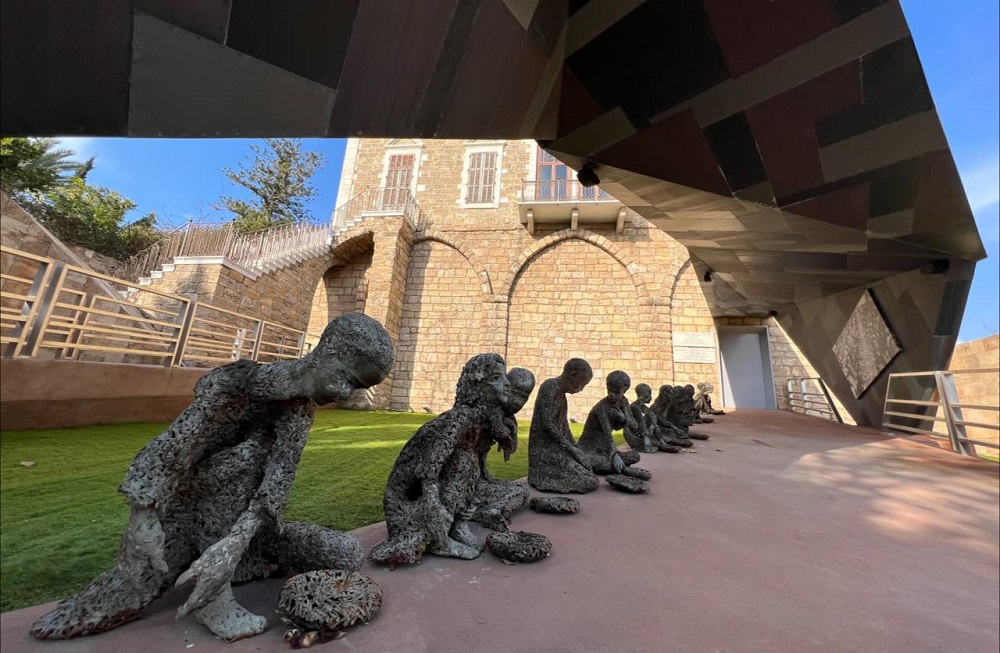
The walls whisper the voices of those who endured unimaginable pain yet found hope and home here in Lebanon.
The museum is unassuming at first glance, set against a picturesque backdrop. But as soon as you step inside, it transforms into a living archive of resilience.
Preserving the Legacy of the Armenian Genocide
One of the most moving parts of a visit is walking through the halls where the story of Maria Jacobsen — a Danish missionary who became a lifeline for thousands of orphans — unfolds. Her unwavering compassion is woven into the fabric of the museum, alongside the stories of the children who found themselves in Lebanon after unthinkable loss.
Instead of dry dates and facts, the exhibits immerse you in their world: the pain, the courage, and the determination to rebuild lives.
Personal Accounts and Photographs
It is the photographs that stop you in your tracks — images of young orphans standing in lines, their eyes wide with uncertainty. Letters written in delicate handwriting, belongings carefully preserved from their journey, and testimonials from those who survived create a vivid atmosphere.
You might find yourself lingering in front of a display in which there's a photograph of a boy clutching a battered suitcase, his expression filled with both fear and resolve. It’s moments like these that remind you that history is about people.
Practical Information
- Location: Armenia Street, Bird's Nest Orphanage, Byblos 4504, Mount Lebanon, Lebanon
- Opening Times: Tuesday to Sunday, 10 AM – 5 PM
- Entrance Fee: US$5 for adults, US$3 for adolescents and students
- Getting There: Located in Byblos, it's easily accessible by private car from Beirut or bus/shared taxi (taken from Daoura or Charles Helou). The museum is situated in the heart of the town, near the old city and harbour.
- Tip: Take your time to explore the powerful story of Maria Jacobsen, who dedicated her life to the care of the orphaned children.
2. Saint George Greek Orthodox Cathedral Crypt Museum (Downtown Beirut, Lebanon)
Beneath the grandeur of Saint George Greek Orthodox Cathedral lies a secret — an underground labyrinth where Beirut’s past quietly rests.
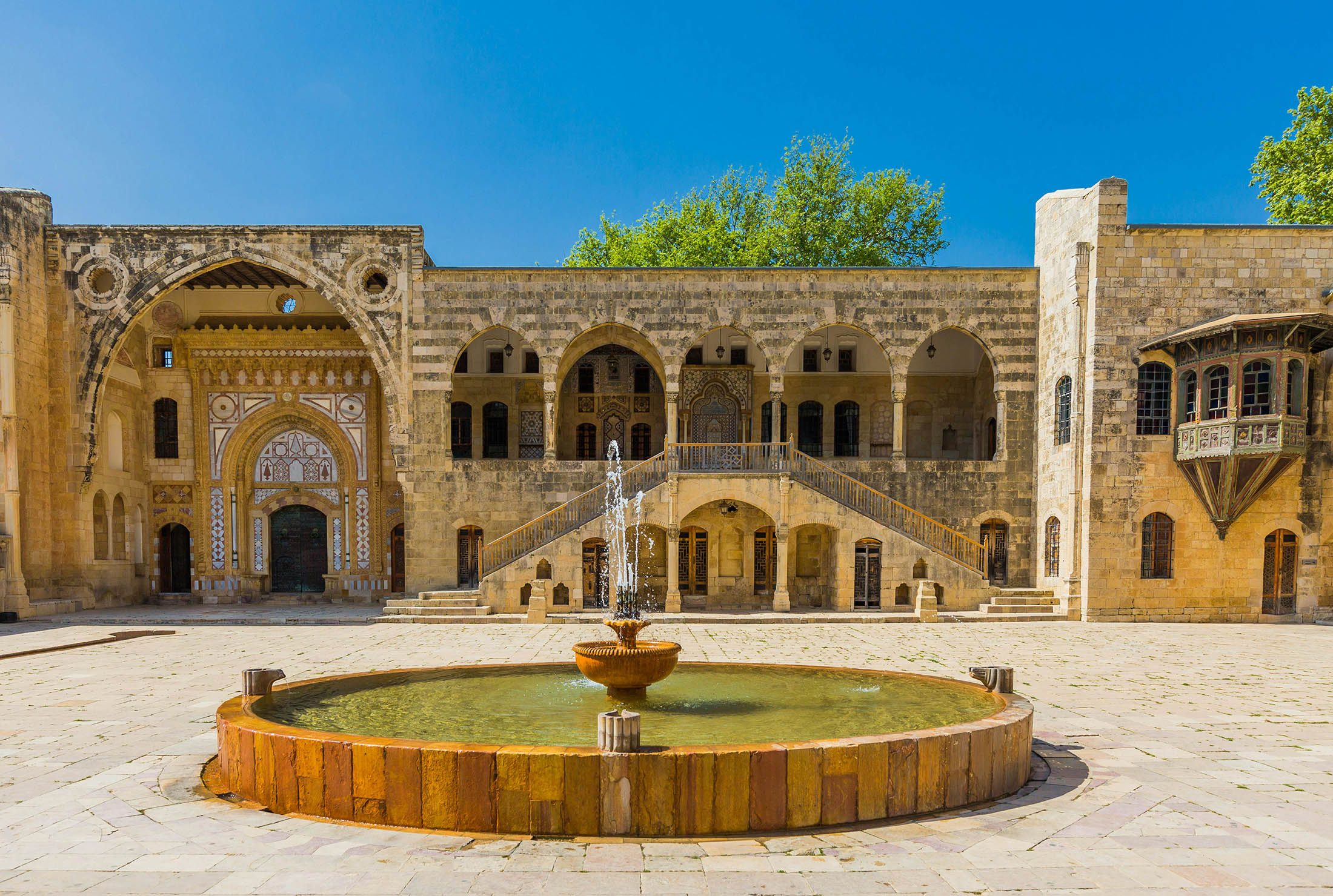
The Crypt Museum is a time capsule buried beneath the city, waiting for you to uncover the stories etched into its stones. The discovery of the crypt was serendipitous, as the Lebanese Civil War bombings in 1975 exposed it, revealing layers of history that had been hidden for centuries.
Religious Artefacts in an Ancient Cathedral
Descending the steps into the crypt is like stepping into a different era.
The light shifts, the air cools, and suddenly you’re face-to-face with pieces of history that date back to the Byzantine period. Delicate mosaics shimmer faintly in the shadows, their patterns telling of early Christian artistry. Ancient stone engravings and oil lamps sit silently, bearing witness to centuries of faith.
The crypt is a living testament to the religious and cultural evolution of Beirut, stretching back over two millennia.
Discover Lebanon’s Religious History
The crypt takes you on a journey through 12 carefully curated stops. The discovery of a necropolis, complete with 25 burials, offers a hauntingly intimate look at how the early Christians honoured their dead. The most moving discovery is the skeleton of a man, resting in his grave with a bronze tiara and iron arrowhead, giving you a sense of the people who once inhabited this land.
At the end of the trail, you find yourself gazing through glass at the cathedral’s altar above.
The Crypt Museum is a place where the sacred and the ancient meet. It’s a quiet, reflective experience that leaves you wondering what other secrets lie beneath Beirut’s streets.
Practical Information
- Location: Nejmeh Square, Downtown, Beirut, Lebanon
- Opening Times: Monday to Friday, 8 AM – 3 PM
- Entrance Fee: US$2.50
- Getting There: Located in Beirut’s city centre, easily accessible by taxi, ride-share (Uber) or 'service'. The museum is situated beneath the Saint George Greek Orthodox Cathedral, near other key downtown attractions. Getting there on foot is also possible, if your accommodation is central.
- Tip: Don’t miss the beautiful mosaics and ancient relics in the crypt — bring a flashlight if you plan to explore the darker, more atmospheric corners for an even more immersive experience.
3. Ameen Rihani Museum (Freike, Mount Lebanon)
In the quiet village of Freike, tucked away from the noise of the world, there’s a house where ideas once echoed louder than voices.
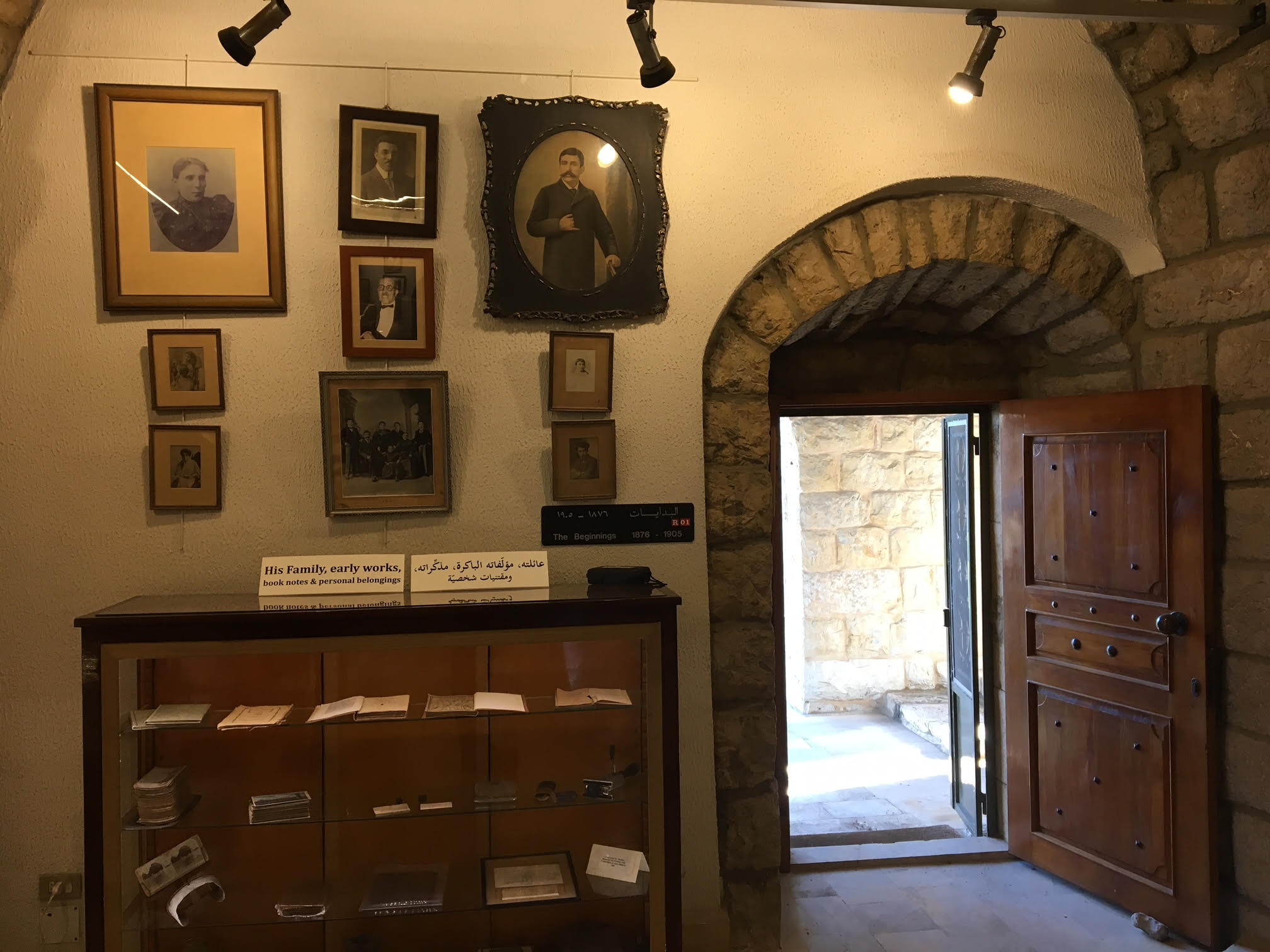
This is the Ameen Rihani Museum — not a grand institution but a home filled with the spirit of a man who believed in bridging the divide between East and West.
Walking into this space feels less like entering a museum and more like stepping into the creative whirlwind of Rihani’s mind.
Celebrating the Life and Works of Ameen Rihani
Rihani was a force of nature.
As you wander through the modest rooms of his family home, you'll find shelves lined with manuscripts written in both English and Arabic, and letters exchanged with thinkers and visionaries of his time.
One wall may catch your eye — on it hangs a portrait of Rihani sketched by his friend, Kahlil Gibran. These are windows into the relationships and philosophies that defined his life.
Cultural Impact and Literary Contributions
It’s hard to overstate Rihani’s influence. He was the pioneer of Arab-American literature and a tireless advocate for cultural understanding. His works, like The Book of Khalid, explored nationalism and reform, breaking boundaries with free verse that reshaped modern Arabic poetry.
Standing among his handwritten drafts and personal memorabilia, you realise this wasn’t just the story of one man — it was the story of a bridge, built word by word, between two worlds.
The Ameen Rihani Museum disarms you with intimacy. It’s a reminder that some of the most powerful ideas are born in quiet corners, and their echoes can reshape entire cultures.
Practical Information
- Location: Freike, Mount Lebanon, Lebanon
- Opening Times: Monday to Sunday, 9 AM – 4 PM
- Entrance Fee: Contact the organisation for up-to-date prices (via Facebook is likely best - https://www.facebook.com/AmeenRihani)
- Getting There: Located outside of Beirut, you can get there by private car (accessed via the Zouk Mikael road) or possibly by shared taxi/minivan.
- Tip: Take a walk around the village after your visit — the surroundings are as peaceful and inspiring as Rihani’s writings.
Museums in Lebanon for Art Lovers
In Lebanon, art isn’t confined to canvases or pedestals — it spills into every corner of life, shaped by the country’s layers of history and bursts of modern expression. Its museums capture this energy, offering spaces where tradition meets experimentation.
For anyone who seeks art that challenges, surprises, or simply moves them, as I do, these museums are essential stops.
1. MACAM (Modern and Contemporary Art Museum) (Alita, Mount Lebanon)
Walking through MACAM is like stepping into a dialogue between Lebanon’s artistic past and its daring present.
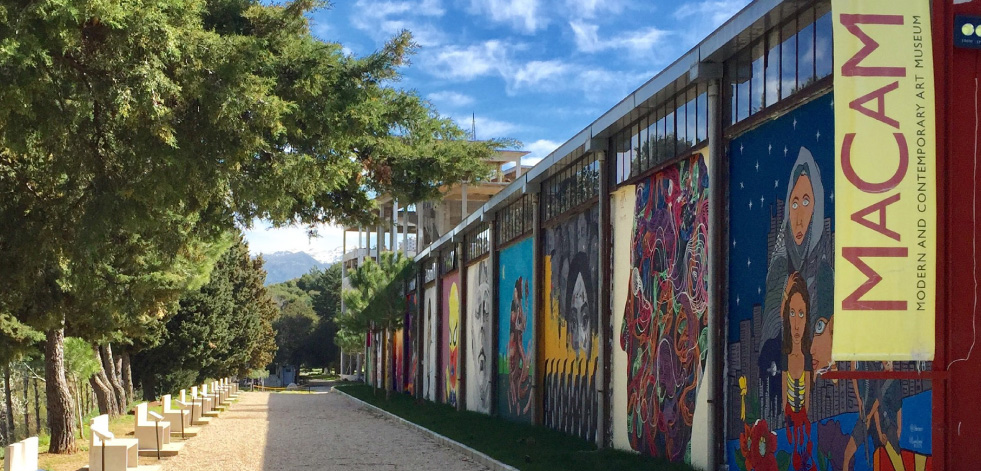
The halls, once part of a factory complex, now hum with the energy of sculptures, installations, and contemporary masterpieces. It’s a place where every turn reveals a new perspective on what it means to create.
A Leading Modern Art Museum in Lebanon
MACAM is the first of its kind in Lebanon dedicated solely to modern and contemporary art.
Founded in 2013, it takes the idea of preserving Lebanon’s artistic heritage seriously, with over 400 sculptures and installations that chronicle the evolution of the country’s creative spirit. But what makes it stand out is how unpretentious it feels — inviting you to experience art as something alive and ever-changing.
Contemporary Works from Lebanese and International Artists
The exhibitions at MACAM don’t just showcase; they challenge. The "Duo Up!" series, for instance, brought together Lebanese and international artists like Diana Bou Salman and Salah Missi to collaborate on bold, boundary-pushing installations.
Every exhibit feels like a conversation — between artists, materials, and visitors — that leaves you questioning, reflecting, and, ultimately, inspired.
Visiting MACAM is a reminder of how deeply rooted creativity is in Lebanon’s identity.
Practical Information
- Location: Alita, Mount Lebanon, Lebanon
- Opening Times: Wednesday to Saturday, 10 AM – 4 PM
- Entrance Fee: Donation only (tours, which need to be booked 2 days in advance, cost US$4 for adults, US$2 for seniors and students, and free of charge for children under 7)
- Getting There: CAR It's accessible by private car from Beirut (approximately 1.5 hours). Located just outside Byblos, the museum is nestled in the beautiful Alita region. Take the Qartaba exit from the coastal highway, and then follow the main road uphill for approximately 7 km. BUS You can get a shared taxi/minivan to Byblos and get out early, at an intersection in Halat (just past KFC on your right). You'll then need to find your own way to the museum (possibly by hitch-hiking, or taking a taxi).
- Tip: Don’t forget to explore the museum’s outdoor sculpture garden — it's a perfect place to enjoy the landscape while taking in some larger-than-life artworks.
2. Atelier Assaf (Al Warhaniyeh, Mount Lebanon)
There’s a road that winds through the mountains of Al Warhaniyeh, past groves of ancient olive trees and wildflowers that seem to lean toward the sun.
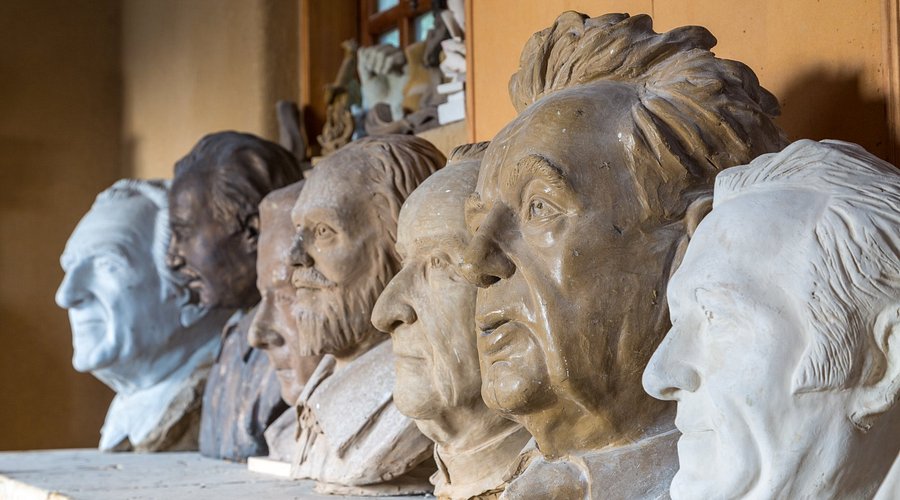
At the end of it lies Atelier Assaf, a place where art grows. Stone sculptures seem to sprout from the earth, blending so effortlessly with the landscape that it’s hard to tell where nature ends and human hands begin.
A Personal Experience with Hani Assaf’s Art
Hani Assaf’s work doesn’t shout, but waits.
As you stand before one of his pieces, a figure carved from local stone, it's like stepping into someone else’s memory. Each curve and edge seems deliberate, not just crafted but unearthed.
Nearby, a workshop filled with blocks of marble and chisels hints at the patience behind each creation. The air smells faintly of stone dust, grounding the experience in the labour and love poured into every sculpture.
Exploring Socio-Political Themes through Art
One sculpture might catch your attention — a fractured, jagged form that looks like it has been split by lightning. It seems to hold Lebanon’s story in its cracks: a history of division, of resilience, of piecing itself back together.
Another, softer piece, nestled near a garden path, reminds you of the quiet endurance of people tied to their land.
The works invite you to sit with them, to notice the subtleties and decide for yourself what they mean.
Atelier Assaf gives you moments — of stillness, of curiosity, of connection. And maybe that’s the point: to leave carrying a question, not just about the art but about the world it reflects.
Visit the museum and art gallery while here.
Practical Information
- Location: 3 km from Nabih Al Safa, Al Warhaniyeh, Mount Lebanon, Lebanon
- Opening Times: By appointment only (contact in advance)
- Entrance Fee: Varies depending on the exhibition or experience. Contact them for up-to-date fees on +961 3 737528
- Getting There: It's most accessible by private car from Beirut (approximately 1 hour). The studio is nestled in the hills of Mount Lebanon, so be prepared for scenic, winding roads.
- Tip: Reach out ahead of time to book a tour or workshop — this personal and intimate experience gives you a deeper connection to the art and the environment.
3. Dar El-Nimer for Arts and Culture (Clemenceau, Beirut)
Tucked away in the Clemenceau district of Beirut, Dar El-Nimer for Arts and Culture feels like a secret.
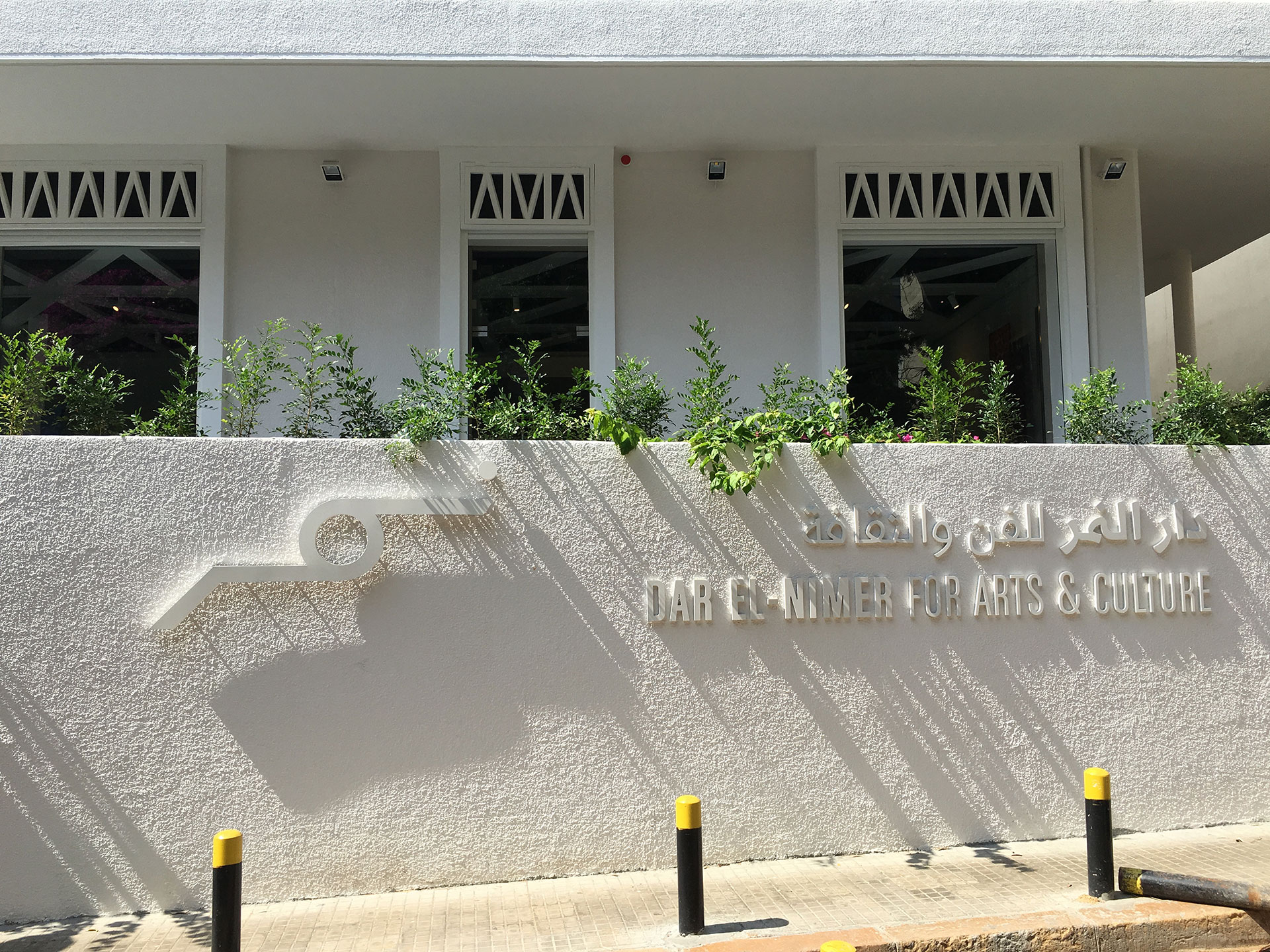
It’s a living, breathing testament to Lebanon’s creative heartbeat, offering a chance to dive into the country’s ever-evolving cultural landscape.
This non-profit foundation, founded in 2016, might be easy to miss if you're not looking, but once you step inside, you'll quickly see it’s a vital cultural hub in the city.
A Hub for Contemporary Lebanese Art
Dar El-Nimer is where the old and new collide, a place that gives voice to the artists pushing boundaries and challenging perceptions. The space is a celebration of Lebanon’s diverse art scene, showcasing works that grapple with the nation’s complex history, politics, and society.
You’ll find everything from contemporary art that feels raw and urgent, to thought-provoking pieces that reflect Lebanon’s deep-rooted traditions.
This is a space that invites conversation, reflection, and even discomfort, and that’s exactly what makes it so powerful.
Rotating Exhibitions and Cultural Events
With every visit, there’s something new to explore.
The exhibitions rotate, keeping the experience fresh, and they always feel like a conversation between Lebanon’s past and its present. And it’s not just about the art on the walls — the space hums with energy, offering workshops, lectures, and performances that invite you to engage in the conversation yourself.
Whether you’re a first-time visitor or a regular, Dar El-Nimer has a way of making you feel like you’re part of something bigger, something that connects you to the heart of Beirut's cultural pulse.
Practical Information
- Location: America street, Clemenceau, Beirut, Lebanon
- Opening Times: Monday to Saturday, 11 AM - 5 PM
- Entrance Fee: Free of charge
- Getting There: RIDE-SHARE If you prefer a fast and direct option, a taxi or ride-sharing service like Uber or Bolt can take you directly to Dar El-Nimer. Simply tell the driver the museum's name, and they should know the location. WALKING Alternatively, use Maps.Me or Google Maps and walk from your location in Beirut. SERVICE It might take a little longer than a ride-share, but it'll still do the job.
- Tip: Don’t just show up; contact ahead to see what's going on.
Lesser-Known Museums in Lebanon, and Hidden Gems
Lebanon may be home to iconic museums like the National Museum of Beirut and the Sursock Museum, but tucked away in quieter corners are hidden gems that promise perhaps a more intimate journey.
These lesser-known treasures offer something unique, revealing aspects of Lebanese culture and art that often fly under the radar.
1. Villa Audi Mosaic Museum (Achrafieh, Beirut)
Hidden among the cultural streets of Archrafieh, the Villa Audi Mosaic Museum quietly invites you into a world of intricate craftsmanship.

Far from the larger crowds of Beirut's more famous attractions, this tucked-away villa is a sanctuary of Lebanese art, where ancient techniques and stories are preserved in stunning detail.
The Art of Mosaic Craftsmanship in Lebanon
Lebanese mosaics are storytellers in their own right. At the Villa Audi Mosaic Museum, every piece speaks of a time and place, with intricate patterns that reflect the region’s rich cultural history.
From the ancient world to the present day, the mosaics on display offer a layered narrative, capturing the artistry and precision that have been honed for centuries.
Ancient and Contemporary Mosaics
The museum’s collection is a fascinating journey through time. You’ll find ancient Roman and Byzantine mosaics, their vibrant colours still intact after centuries, juxtaposed with modern works that carry the same meticulous technique into new contexts. This fusion of old and new is about showing how art, like the country itself, evolves while staying rooted in its origins.
The Villa Audi Mosaic Museum offers an opportunity to understand how the past and present blend seamlessly, creating a narrative that is uniquely Lebanese.
Practical Information
- Location: Charles Malek Avenue, Achrafieh, Beirut, Lebanon
- Opening Times: Monday to Saturday, 9 AM - 6 PM
- Entrance Fee: Free of charge
- Getting There: The museum is located in Achrafieh, easily accessible by taxi, ride-share (Uber), 'service', or on foot.
- Tip: Plan ahead. With its intimate atmosphere and the opportunity to explore mosaics firsthand, the experience becomes more engaging when you can connect directly with the art.
2. Lebanese Marine and Wildlife Museum (Jeita, Mount Lebanon)
Nestled in the quiet, almost forgotten corners of Jeita, the Lebanese Marine and Wildlife Museum isn’t the kind of place you stumble upon by accident.
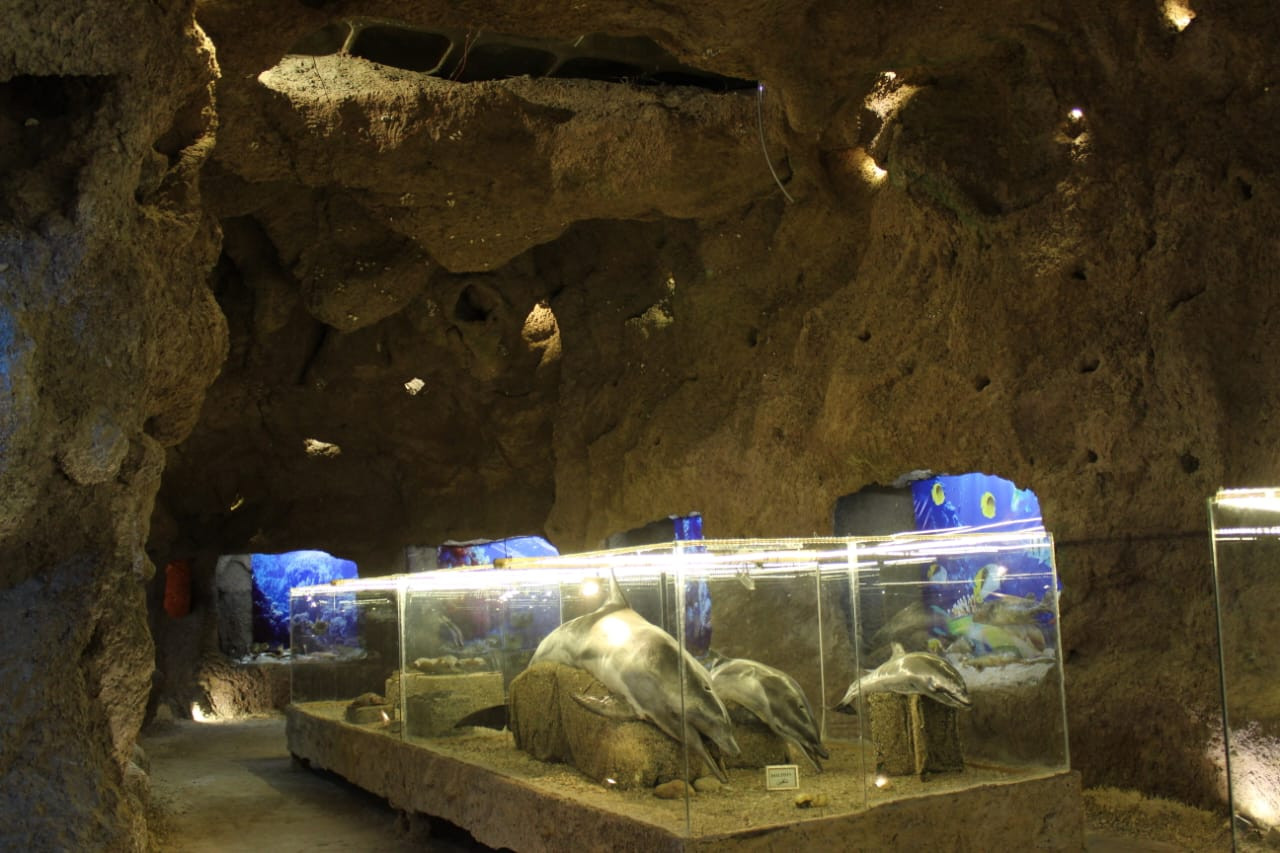
From the moment you step inside the marine section, it’s as if you’re standing at the edge of an ocean, peering into the deep, layered mysteries of Lebanon’s wild world.
The air is thick, but it’s also electric, sparking your curiosity about what lies beneath the surface.
Lebanon’s Marine Biodiversity
Part of the museum is a window to the Mediterranean’s soul. The sharp lines of fish, the smooth contours of shells, the sting of jellyfish suspended in time — it’s an almost haunting experience.
The deeper you venture into the exhibit, the more you realise how much life thrives just beneath the surface of the waters.
This corner offers a glimpse of Lebanon's diverse marine life, from the smallest, almost imperceptible creatures to the larger-than-life predators lurking in the deep. It’s a celebration of a world many never see, but one that has everything to do with the land you’re standing on.
Educating About the Ecological Efforts of Lebanon
The museum is a story in motion. Some may feel the quiet but urgent call to preserve these ecosystems — the plastic-wrapped coral reefs, the disappearing sea turtles, the fishing nets that know no bounds.
The museum is subtly showing you the work and dedication to appreciate and save Lebanon’s biodiversity.
Practical Information
- Location: Jeita, Mount Lebanon, Lebanon
- Opening Times: Monday to Sunday, 8 AM – 8 PM
- Entrance Fee: LBP 480,000
- Getting There: CAR The museum is located near the Jeita Grotto, a UNESCO World Heritage site, and is easily accessible by private car from Beirut, about a 30-minute drive. BUS Take a minivan from Beirut (Daoura) to Jounieh, then another more local minivan from Jounieh to Jeita. Tell the driver to drop you off at the Jeita Grotto stop. From there, walk 500 meters north along the Coastal Road until you reach the Lebanese Marine and Wildlife Museum.
- Tip: It's ideal to combine your visit with a trip to the Jeita Grotto, as both sites are close to each other. If you're interested in Lebanon's biodiversity, consider taking a guided tour for a more engaging experience.
3. Symposium Aley (Aley, Mount Lebanon)
Imagine wandering through a town where the streets themselves seem to pulse with artistry, where every corner reveals a new form, shape, or figure carved in stone.
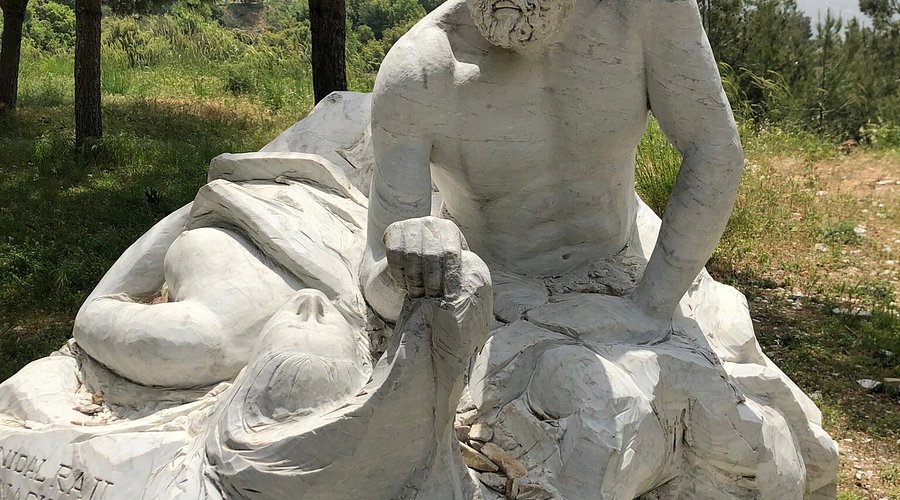
This is Symposium Aley — Lebanon’s unconventional open-air museum, a place where the boundaries between art, landscape, and community blur seamlessly.
Located in the mountain town of Aley, it feels like a walk through an artist’s dreamscape, where more than 300 sculptures, both monumental and intimate, invite you to pause, reflect, and wonder.
A Blend of Art, Sculpture, and Education
Symposium Aley isn’t your typical museum. Here, the artworks don’t sit behind glass or in sterile halls; they’re alive, woven into the fabric of the town. The sculptures are scattered throughout the town’s streets, plazas, and parks, creating a conversation between the art and the landscape.
Each piece is purposeful, as though it’s been placed to engage with the viewer, to make them think, to make them stop. This is art that asks you to participate — not just to look, but to experience it in its environment. It’s a space where the town and the artwork are equally important, where nature and sculpture share a moment of quiet dialogue.
A Cultural Experience in Aley
Visiting Symposium Aley is more like a cultural treasure hunt than a traditional museum visit. The town, already known for its sweeping views and inviting atmosphere, becomes a living canvas for artists who’ve left their mark on this unique space.
With each step you take, the sculptures around you unfold new layers of meaning — some speak of history, others of the present, and a few even seem to gaze into the future. In Aley, art isn't just displayed; it's integrated into the rhythm of daily life.
Whether you're wandering along narrow streets or relaxing in a shaded square, the town itself becomes a gallery, where every turn offers a new perspective.
Practical Information
- Location: Aley Ras el Jabal, Piscine Street (opposite Casino Piscine Aley), Main Street Aley, Balcony Aley, Mount Lebanon, Lebanon
- Opening Times: 24/7
- Entrance Fee: Free of charge
- Getting There: CAR From Beirut, head east on the Damascus Road (Route 5). Follow the road for approximately 20-25 km towards Aley. As you approach Aley, take the exit for "Ras el Jabal" and continue along the main road, which will lead you to the Symposium Aley located near the Piscine Street, opposite the Casino Piscine Aley. Parking is available nearby. BUS To reach Symposium Aley from Beirut, head to Charles Helou near the port area, where you can catch a bus.
- Tip: Plan your visit in the early evening to enjoy the cool mountain breeze and atmosphere of the area.
Frequently Asked Questions
In this section, I’ll answer some of the most common questions I’ve had about Lebanon’s museums. The answers will hopefully help you navigate Lebanon’s cultural scene.
Keep reading for advice.
What is the most famous museum in Lebanon?
When it comes to the most famous museum in Lebanon, the National Museum of Beirut takes the crown.
This place is like a time capsule of Lebanon’s history, with everything from ancient Phoenician sarcophagi to Roman mosaics. It’s the go-to spot for anyone wanting to dive deep into the country’s rich cultural heritage.
I was struck by how it tells the story of Lebanon from thousands of years ago, all while showcasing the country’s resilience — especially after surviving the Lebanese Civil War. If you’re looking for an introduction to Lebanon’s past, this is where you need to start.
What is the best museum to visit in Lebanon?
When it comes to the best museums to visit in Lebanon, Beit Beirut and the Nicolas Sursock Museum should be at the top of your list.
Beit Beirut offers a unique and powerful experience, housed in a former building scarred by the Lebanese Civil War. It gives you a glimpse into the profound impact of the war on Beirut's people and its landscape, with exhibits that reflect on Lebanon's resilience and transformation.
Meanwhile, the Nicolas Sursock Museum is a must-see for contemporary art lovers. Nestled in a beautifully restored villa in the Achrafieh district, it showcases a blend of Lebanese and international art, offering a vibrant look at the country’s modern cultural scene.
Both museums provide deep and diverse insights into Lebanon’s history, culture, and artistic heritage, making them essential stops for any visitor.
Are museums in Lebanon open every day?
Museums in Lebanon are not all open every day.
While some, like the National Museum of Beirut, are typically open every day except Mondays, others have more limited hours.
Many museums, especially smaller or privately-run ones, are closed on Mondays or have varying schedules depending on the season or special events. So it's always wise to check the opening times for each museum in advance to avoid disappointment.
How much do museums in Lebanon cost?
The cost of visiting museums in Lebanon can vary widely depending on the museum.
Larger, well-known museums like the National Museum of Beirut, have a modest entrance fee (typically ranging from LBP 3,000 to 10,000 or US$2–$7).
Some smaller or more specialised museums charge even less.
In certain cases, entry is free (for example at the American University of Beirut Archaeological Museum). This is especially true for children and students.
Are there any free museums in Lebanon?
Yes, there are a few museums in Lebanon that offer free admission. Some notable examples include the Lebanese Military Museum and the Sursock Museum in Beirut, the latter occasionally offering free entry during special events or on specific days.
Can I get a guided tour in English at Lebanon’s museums?
Yes, some museums in Lebanon offer guided tours in English. Popular museums like the National Museum of Beirut and MACAM (Modern and Contemporary Art Museum) provide English-speaking guides to help you navigate the exhibits.
It’s best to check in advance or upon arrival to confirm availability, as some tours need to be booked in advance (as is the case with MACAM).
What are the best times to visit museums in Lebanon?
The best times to visit museums in Lebanon are typically during the weekdays, especially in the morning or early afternoon, when they are less crowded.
If you prefer a quieter experience, aim to visit during off-peak seasons, such as late fall/autumn or early spring, avoiding the summer tourist rush.
Weekends, if the respective museums are open, tend to be busier, particularly at popular spots like the National Museum of Beirut, so if you’re looking for a more relaxed visit, weekdays are ideal.
Are museums in Lebanon suitable for kids?
Yes, many museums in Lebanon are suitable for kids, offering interactive exhibits and educational experiences that can engage younger visitors.
Museums like the National Museum of Beirut provide opportunities for children to learn about Lebanon’s history, art, and culture in an exciting and accessible way. Additionally, some museums, like the Lebanese Marine and Wildlife Museum, offer more hands-on experiences, which can be especially enjoyable for children interested in nature and wildlife.
Always check in advance, as some museums may have specific programs or workshops designed for children, making the experience more engaging and educational for younger audiences.
How long should I spend at each museum in Lebanon?
The amount of time you should spend at each museum in Lebanon depends on your level of interest and the size of the museum. Generally, you can expect to spend about 1 to 2 hours at smaller museums, for example Beit Beirut. The spaces offer a more intimate experience.
For larger museums like the National Museum of Beirut, you might want to allocate 2 to 3 hours to fully appreciate their extensive collections. If you're interested in a more detailed exploration or joining a guided tour, plan for longer visits.
Remember, some museums also have special exhibitions, which could add more time to your visit depending on your interests.
Conclusion: A Rich Cultural Journey Through Museums in Lebanon
Lebanon’s museums are living, breathing reflections of a country that has witnessed millennia of history, resilience, and creativity. From ancient Phoenician relics to modern artistic expressions, each museum offers a unique window into Lebanon’s diverse heritage.
Whether you're drawn to the poignant narratives of war at Beit Beirut, captivated by the artistry of the Sursock Museum, or mesmerised by the underwater fossils at the Memory of Time, the museums of Lebanon promise an experience that will deepen your understanding of the country.
Visiting these museums isn’t just about looking at exhibits — it’s about engaging with stories, both ancient and contemporary, that have shaped the land and the people. Each museum is a chapter in Lebanon’s ongoing story, inviting you to step into the past and witness the resilience and creativity that continue to define this nation.
So, whether you’re a history buff, an art enthusiast, or simply curious about Lebanon’s rich culture, as am I, these museums will not disappoint. They are waiting to tell you their stories, and I’m sure you’ll walk away with a new perspective on this fascinating country as did I.
Have a favourite museum in Lebanon? Share this guide with someone who loves exploring history and culture!
